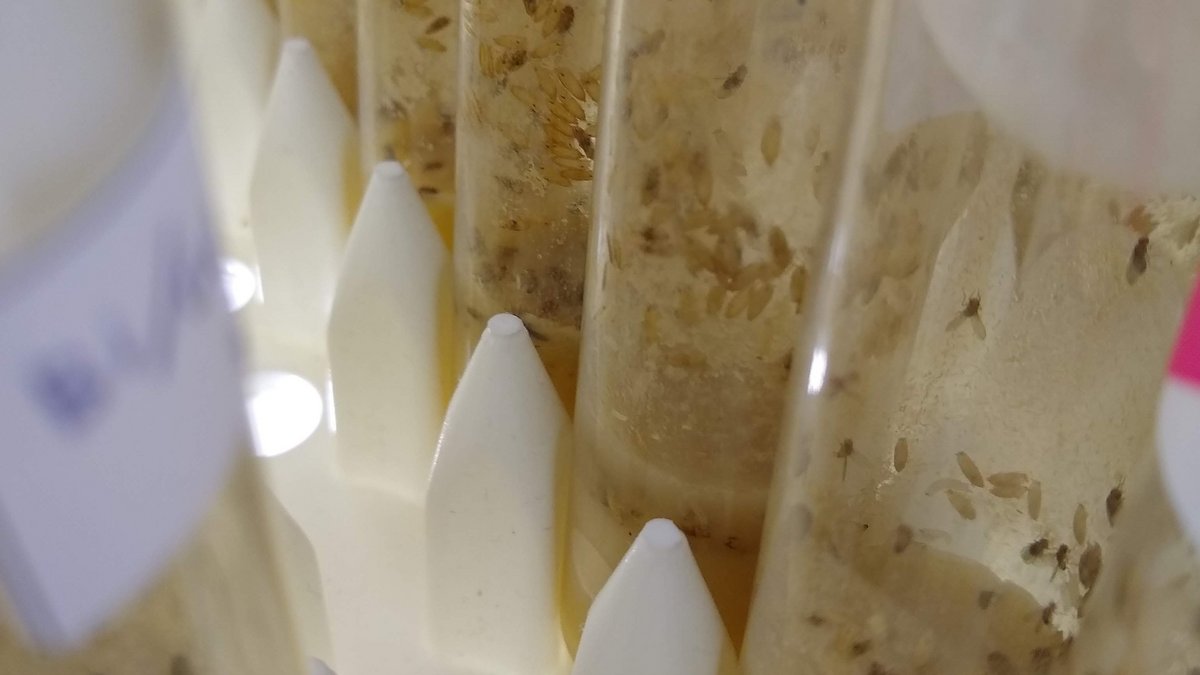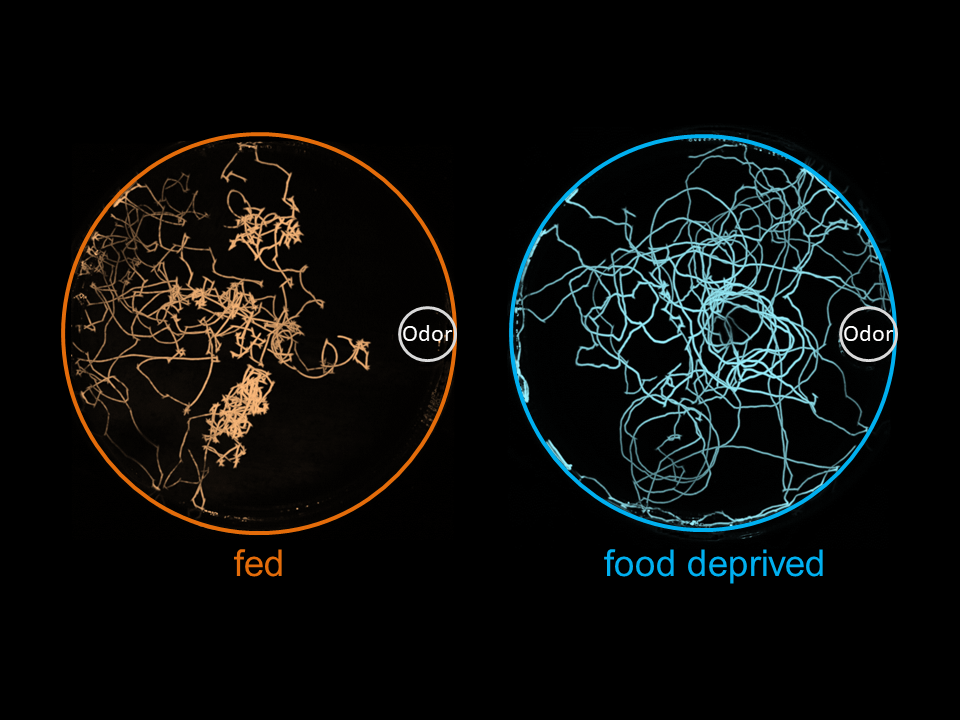
Image: Katrin Vogt
Neural circuits underlying state and context-dependent behaviour of Drosophila larvae
“I am always fascinated how flexible we are in our responses to other individuals or towards stimuli,” says neurobiologist Katrin Vogt. Our decision on how to behave depends on the environmental context and also on our internal state and mood. “It is the brain that integrates this information and enables this flexibility, and I am excited every day about solving the puzzle of how it does that.” But there are still many open questions in the area of state and context dependent behaviour. Vogt herself is working with Drosophila larvae to gain a better understanding of the neural basis of flexible behaviours. To find answers to these questions, she is recording behaviour experiments with genetically modified fly larvae and analyzing data with the tracking software Trex, published by the Couzin lab. Soon, Vogt hopes to enrich the cluster environment “by adding a deeper understanding of the neural mechanisms underlying decision-making, which is very probably also applicable to other species studied in the cluster.”

Image: Katrin Vogt
